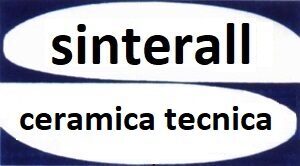Since many years, Sinterall is specialized in the production of “customer” details in sintered alumina with a minimum content of 96% up to 99.9, according to drawings, specifications or samples. The ceramics with these percentages are to be considered as having a very high content. The high dielectric strength, high thermal conductivity combined with a low expansion coefficient, excellent mechanical characteristics, zero porosity and chemical inertia make SIALOX 96 the ideal material for applications in the industrial burner sector.
The sintered alumina is obtained by sintering from aluminum oxide. The starting material is therefore an oxide of a metal enriched with additives to facilitate its processing and the final material is a ceramic oxide. The sintering process, combined with pressure and temperature, involves a structural change and the material obtained is no longer traceable to the starting one. After the pressing / forming process, we proceed with the heat treatment. The material obtained is a sintered alumina, crystalline structure with zero porosity, of the corundum family, such as rubies and sapphires.
The ceramic bodies appear, after the thermal sintering process, with a rough finish.
To improve the aesthetic appearance, surface treatments are often used.
PROS AND CONS OF SURFACE TREATMENTS
GLAZING
- PROS: Glazing or vitrification involves the application of a showcase on the rough surface of the detail, drying, further heat treatment to melt and intimately bond the glaze to the ceramic: it improves the aesthetic appearance making the surface resistant to dirt and easy to clean.
- CONS: Enamelling is always negative since it is a low melting material with thermal and dielectric characteristics “not even remotely comparable” to alumina. In order to be low melting, the showcase is additivated with metals that worsen its dielectric strength even at temperatures below 500/600 ° C, giving rise to difficulties in hot re-ignition with potential discharges along the vitrification rather than between the electrode and the flame spreader. In the specific case of use in the industrial burner sector with operating temperatures above 800/900 ° C, there is a softening of the display case due to high temperatures with the possibility of unwanted gluing. The surface technical characteristics of the product will therefore be those of the poorest material: glass.
VIBROFINISHING
- PRO: Tumbling in water to eliminate processing witnesses, any burrs and round the edges: it improves the appearance making the surface extremely smooth at low cost.
- CONS: Tumbling is negative in the case of applications involving thermal cycles with high gradients; such application could cause breakage of the piece.
In conclusion
Glazed or vitrified ceramics are a compromise between aesthetics and functionality for “domestic” applications, not critical such as “industrial” ones. Enamelling is therefore not recommended for “industrial” applications due to the reasons already explained.
Over the years, several users have had the opportunity to personally verify these problems highlighted by us and spontaneously made a technical rather than an aesthetic choice.
